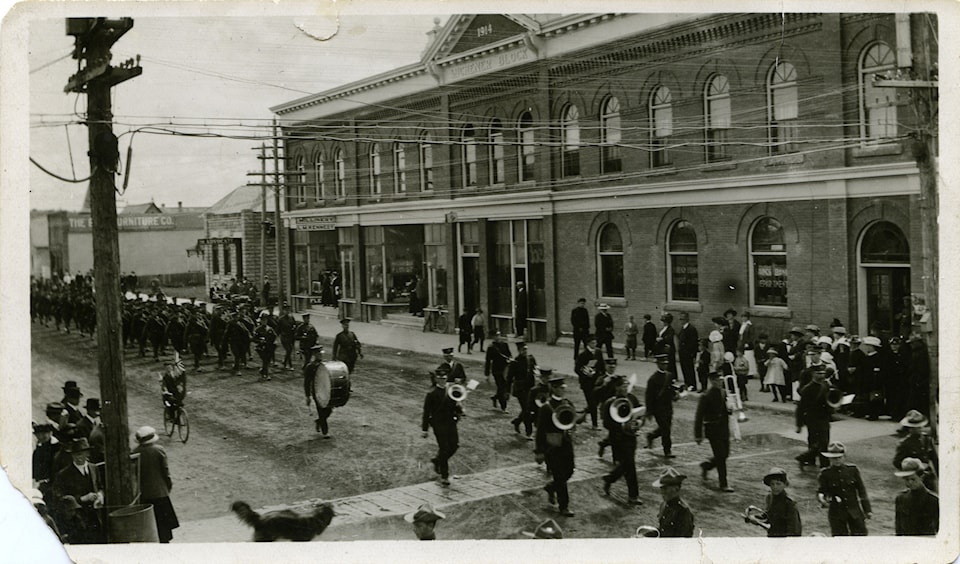The First World War reshaped Alberta — and most particularly Red Deer — in “horrific” and unprecedented ways, says local historian Michael Dawe.
Dawe did extensive research on local history between 1914-18 after being asked to contribute a Central Alberta-focused chapter for a new book called The Frontier of Patriotism: Alberta and the First World War (co-edited by Adriana Davies and Jeff Keshen).
He found young Red Deer men were primarily being trained to join the Canadian Mounted Rifles at cavalry camps run on the local fairgrounds and a field that’s now City Hall Park.
This old-fashioned, Boer-War-style approach proved disastrously ineffective in the first global conflict that introduced machine guns and poisoned gas, said Dawe. “Here they were, these gallant young soldiers, riding into battle on horseback, and they were swept away by enemy fire…
The losses, especially early in the war, before battle tactics changed in response to modern weaponry, “were phenomenal.”
The Red Deer region lost 118 men out of a general population of about 5,000, and had two-to-three times that number of young soldiers coming back from Europe with injuries. “They had wounds to their minds as well as their bodies.”
Post-traumatic stress disorder, known as ‘shell shock,’ was little understood, said Dawe, who noted the former Alberta Ladies College (and former Michener Centre Administrative building) became a hospital for returning soldiers.
Many could never fully contribute to the community. Even those that could had trouble finding jobs, since the area’s economy was in a tailspin from the war and 1918 flu epidemic. “There were no Roaring ’20s in Western Canada,” he added. Central Alberta didn’t start prospering again until the discovery of oil and gas in the early 1950s.
The period between the two world wars became a grim eye-opener for a population that once optimistically believed things would only get better, said Dawe. “It shattered lives… it took a whole generation before thing began to improve.”
He believes The Frontier of Patriotism: Alberta and the First World War, which also includes a chapter about medical history written by Red Deer’s Dr. Bob Lampard, is important reading because it examines the forces that shaped many of our parents and grandparents. “A lot of what we see today is rooted in those days.”
The Frontier of Patriotism, published by University of Calgary Press, is available at Sunworks in Red Deer.
